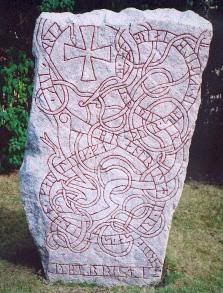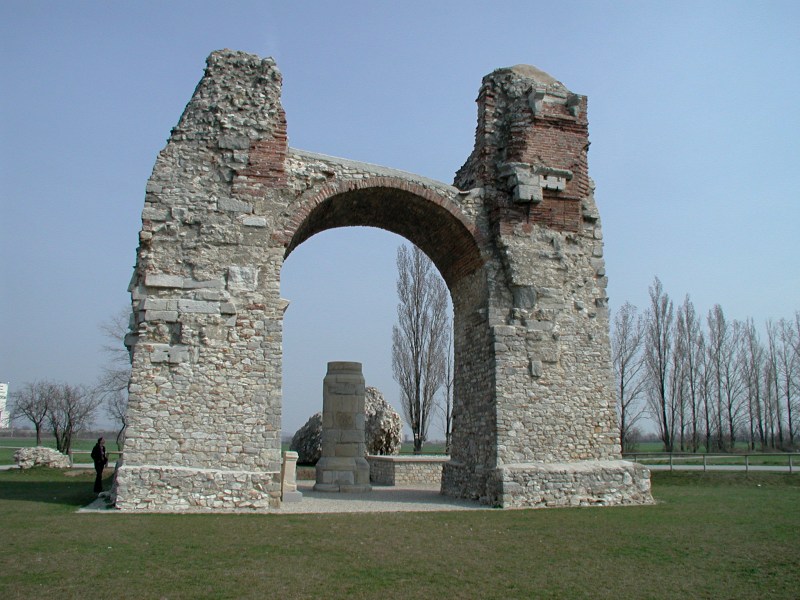 I just started 'The Secret of the Runes', so I think that I will use this post to enter my related observations over time.
I just started 'The Secret of the Runes', so I think that I will use this post to enter my related observations over time.
9-16-11: I just started the book, but it occurred to me that von List was originally from Vienna, only about three hundred miles from the Val Camonica. Apparently, one of von List's great interests was the ancient traditions of lower Austria, which would be much closer than that. I suppose if we were discussing someone else, this would be of little consequence, but since that is of ancient interest, there does seem to be some parallel since the Camonica Valley also has very ancient cultural roots. Also, there is the Celto-Alpine connection, which overlaps the Alpine region. For whatever it's worth, the Camonica Valley is only about thirty miles away from fully German-speaking areas (beyond Lombard and Romansh speaking areas in southern Graubünden).
9-17-11: This is a classic book on runic magic. A lot of New Age writers [copy] his occult ideas. The Right misunderstands him and the Left smears him. One of the most lied about men in occult history.
This book is well worth the price. Even though many of his ideas have been used by other occult writers, and some of his ideas on magic are standard New Age rite, it is always interesting to visit the soucre where these rivers sprung. Hopefully, all of Von List's book will be made ready to an English speaking market.
--Wyatt Kaldenberg, Amazon.com review
I was thinking under different circumstances, von List, especially as he appeared later in his life, could almost be labeled as some type of nature-loving hippie environmentalist in the modern era. Stephen E. Flowers' preface begins with "The time has come to let Guido von List at least speak for himself to the English reading public."
9-18-11: Excerpt from pages three and four of the book ('The Mystic Wanderer 1870-77'): List often went in the company of others on his journeys into the mountains, which were taken on foot, by wagon, horse, or rowboat; but he would usually strike out on his own at some point to seek the solitude of nature.
Besides gaining general mystical impressions in these outings, List also engaged in active celebratory ritual work. He would perform various rituals that sometimes seemed quite impromptu. The most famous depiction of such an event is his celebration of the summer solstice on 24 June 1875 at the ruins of the Roman City of Carnuntum. For this--as for so much else--we are dependent on List's own somewhat fictionalized account, first published in Vienna in 1881.
 Basically, the ritual elements of this outing included the arduous task of gaining access to the so-called Heindentor ("Heathen Gate") of the city (which List mystically identified as the gate from which a German army set out to conquer Rome in 375 C.E.), the drinking of ritual toasts to the memory of the local spirit (genius loci) and the heroes of the past, the lighting of a solstice fire, and the laying of eight wine bottles in the shape of the "fyrfos" (swastika) in the glowing embers of the fire. List and his company then awaited the dawn.
Basically, the ritual elements of this outing included the arduous task of gaining access to the so-called Heindentor ("Heathen Gate") of the city (which List mystically identified as the gate from which a German army set out to conquer Rome in 375 C.E.), the drinking of ritual toasts to the memory of the local spirit (genius loci) and the heroes of the past, the lighting of a solstice fire, and the laying of eight wine bottles in the shape of the "fyrfos" (swastika) in the glowing embers of the fire. List and his company then awaited the dawn.
These early experiences were sometimes later more completely fictionalized, as, for example, in his visionary tale "Eine Zaubernacht" (A Night of Magic). In this account, the persona (List) succeeds in onvoking from the great mound a divine seeress (Hechsa) who reveals to him that he is not to be the liberator of the Germans--but that despite this "the German folk has need of the skald."
[Above right: "Heathen's Gate" in Carnuntum]
Excerpt from page five (including text from 'The Folkish Journalist 1877-87' and 'The Nationalist Poet 1888-98'): Through these years, List was also working on his first book-length (two-volume) effort Carnuntum, a historical novel based on his vision of the Kulturkampf between the Germanic and Roman worlds centered at that location around the year 375 C.E.
Carnuntum was published in 1888 and became a huge success, especially among the Pan-German nationalists of Austria and Germany. Its publication brought its author more to the attention of important political and economic leaders of German nationalist movements. In connection with the appearance of Carnuntum, List made the acquaintance of the industrialist Friedrich Wannieck. This association was to prove essential to List's future development.
'Carnuntum' would be a period of history that certainly would have greatly affected our ancestors, who had already been basically herded into the Roman fold by that time. The book has not been translated into English though. The city of Carnuntum was located in what is now Austria. One irony, and further connection to us, is that the city was located in the Roman province of Pannonia, which was later the home of the Langobard tribe. They were considered Roman allies at that point.

No comments:
Post a Comment